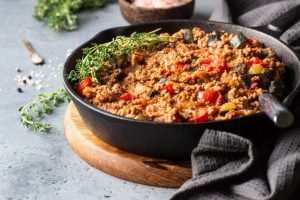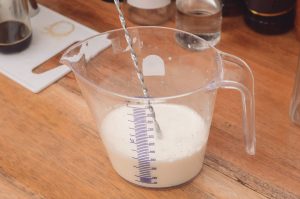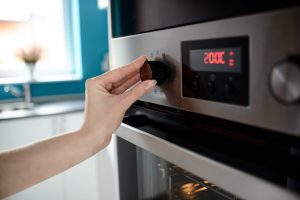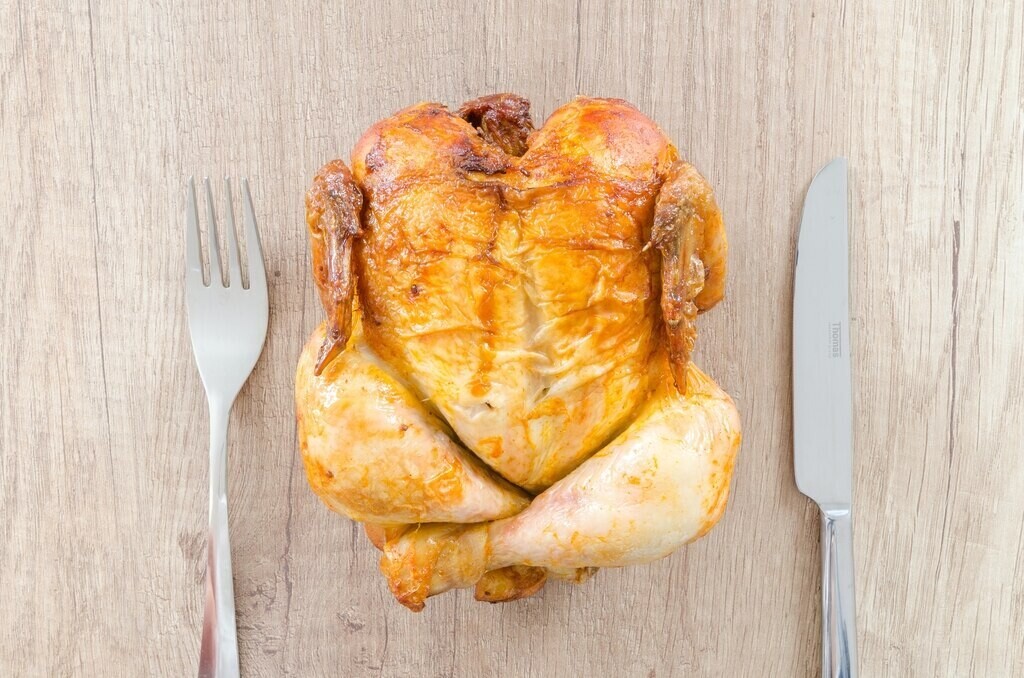
Chicken is one of the most commonly consumed meat in the United States along with beef and pork. Obviously, this is the result of our evident love for rotisserie and buffalo chicken wings. But that doesn’t mean we don’t spoil chicken every once in a while. After all, Americans also love take-outs. So a lot of times it’s left in the fridge or freezer to spoil because they’re either forgotten or you’re simply too busy to cook. Either way, it’s important that you know how to tell if chicken is bad.
This article will help you identify giveaway signs that your chicken is way past due. We’ll also show you storage tips to help you avoid losing a good tasty chicken!
5 Signs that Your Chicken Is Bad
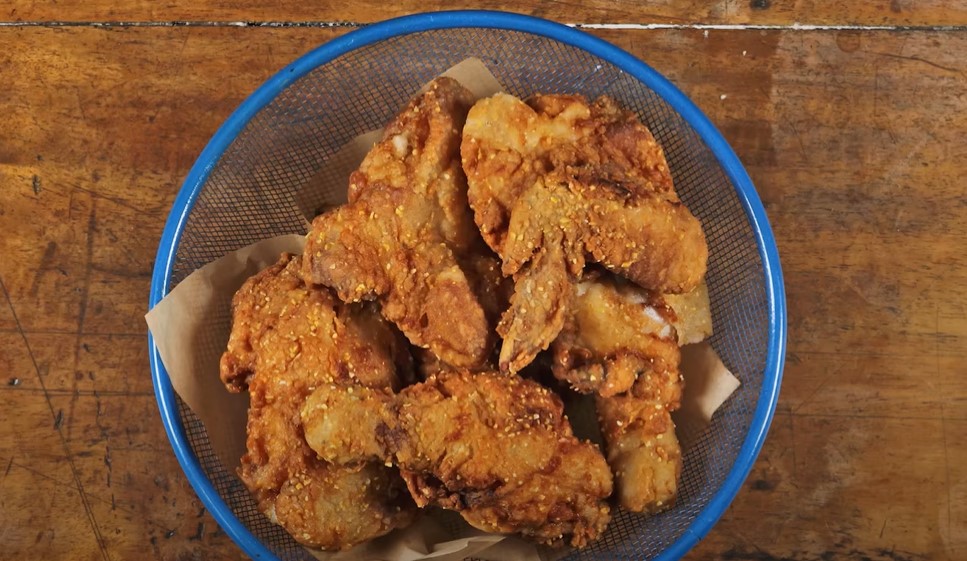
Like you, we feel guilty tossing out food. But trust us. No one should suffer from foodborne illnesses and food poisoning just because you took the chance. Continue reading to ensure food safety in the kitchen as well as on your dining table.
In this section, we’ll answer your questions on how to tell if raw chicken is bad. But we’ll also cover signs for cooked chicken.
Color
The first thing that you notice when you grab a pack of raw chicken is its color and appearance. So of course, it’s only fitting to start here as well.
That said, raw and cooked chicken have different signs in which you can tell whether they’re good or not.
Raw Chicken
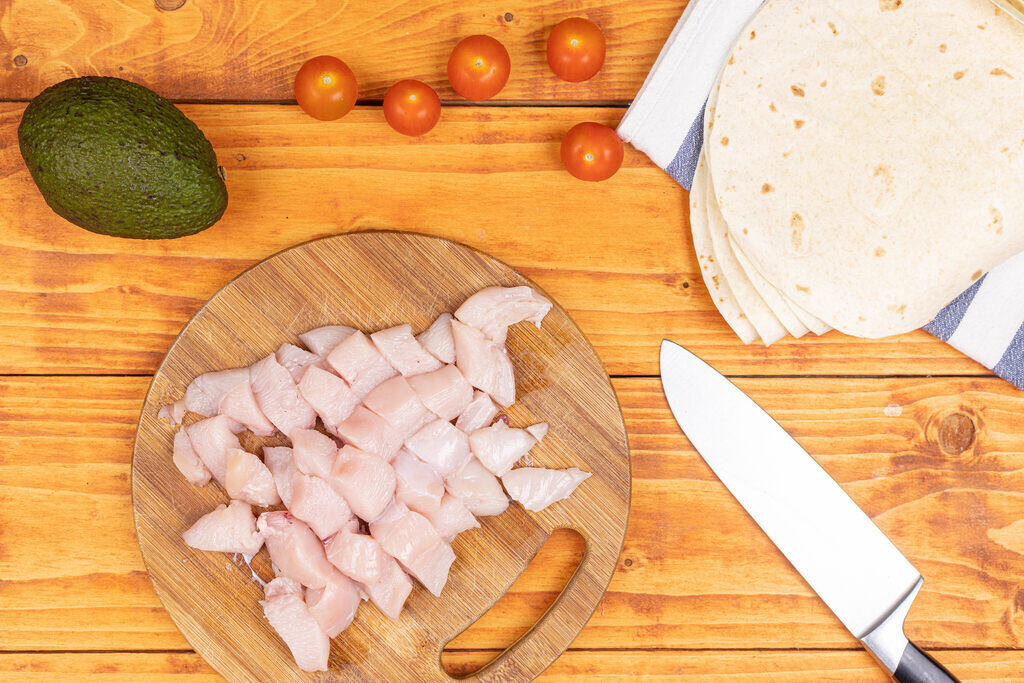
Flickr | Marco Verch Professional Photographer
Just because you learned how to truss a chicken doesn’t mean you’ll get right to it when prepping it for roasting. You have to check your chicken for signs of spoilage first, especially if it’s been sitting in the fridge for days while you learn how to truss.
One of the best ways to tell if your chicken has gone bad is through its appearance when raw. Fresh chicken meat resembles a light pink color with white skin and fatty pieces. Think of it this way: the fresher the chicken, the pinker its flesh would be. If you observe a slight color fading, it’s not spoiled yet. That’s just a slight change because of its exposure to oxygen. But it’s probably not as fresh anymore.
On the other hand, if the chicken’s meat has a dull gray color with yellow spots, then it’s time to chuck it in the bin.
Cooked Chicken
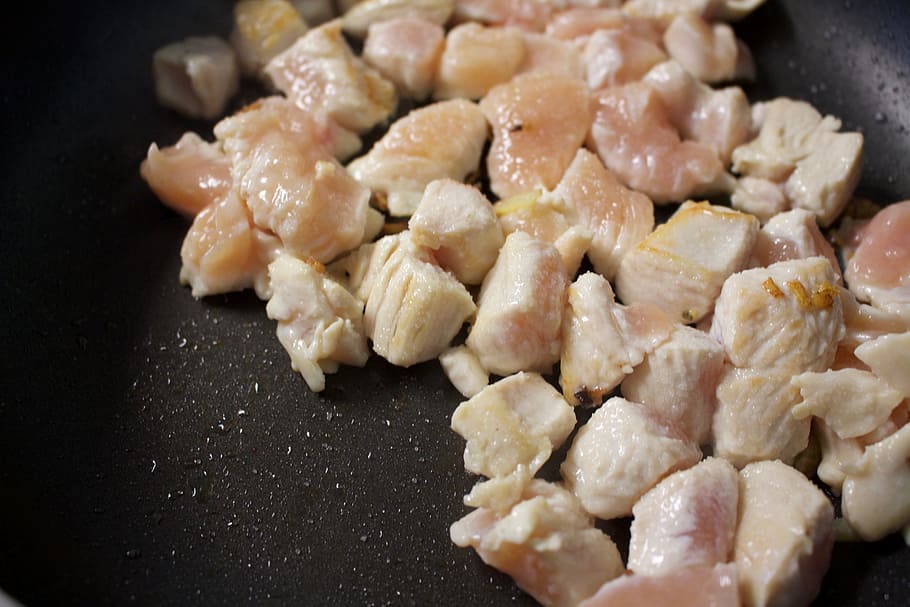
While pink is the indication of a fresh raw chicken, pink for a cooked dish can be a sign that it has not been properly cooked through. Properly cooked chicken should have white meat with no pink flesh. If you cut into it, juices should also run clear and free of red or pink juices.
Eating undercooked chicken can be as dangerous as eating bad chicken. That’s because you risk getting Salmonella infection and developing food poisoning, as well as other foodborne illnesses. So, it’s important to check if the chicken is cooked thoroughly. The most foolproof way to do this, other than by checking the color of its flesh, is by using a kitchen thermometer. While cooking, check if it has reached an internal temperature of 165 degrees F and it should be safe to eat.
READ ALSO: Candy Thermometer Guide: 12 Best Types and Tips for Buying
Texture
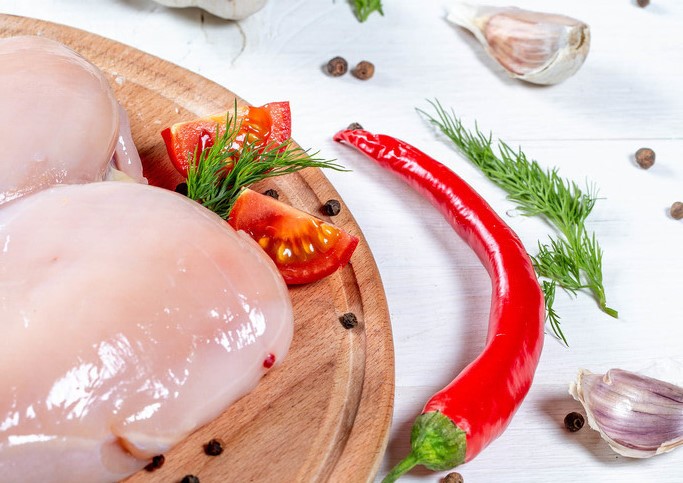
Flickr | Marco Verch Professional Photographer
After checking its color, the next thing that you have to do is feel the chicken’s texture.
Raw Chicken
Does your chicken feel slimy, tacky, or icky? If your chicken checked all the boxes, then throw it right away. Fresh chicken should feel (and look) soft, glossy, and slippery—not slimy. The slimy texture will also tend to stick to your hands. So if it remained, this is a sure sign that it’s gone bad.
Cooked Chicken
Cooked chicken is dense and firm in texture. When you cut through it, it should look compact, yet tender and juicy without the slimy and sticky texture. If you noticed a slight change after stowing it in the fridge, then it’s probably not safe to eat anymore.
Smell
Knowing how to tell if chicken is bad might be hard sometimes, especially if it’s just by touch and mostly when it’s frozen. For that reason, you have to look for other signs like their smell.
Raw and Cooked Chicken
One of the first sure signs of spoilage you’ll notice is its foul smell. Fresh raw chicken has a very mild smell. Sometimes, others wouldn’t even notice it in the first place. But that doesn’t mean it’s gone bad, per se. So how do you tell if chicken is bad? It will smell foul and funky, and will be similar to the stench of rotten eggs.
Mold Formation
Aside from the discoloration, you’ll also notice mold formation on the surface of the chicken. You’re more likely to find this sign for cooked chicken. Though raw chickens and other meat products are usually mold-free, it pays to be observant of the food you’re preparing and cooking.
If you’re thinking about removing the mold or cutting the infected part to avoid food waste, forget about it. The mold can permeate the meat that might not be visible to your eyes. Add to that, there are also bacteria surrounding the mold, consuming it is dangerous and might cause food poisoning.
Expiration Date or Beyond-Use Date (BUD)
Of course, it’s important to check the expiration date as well. So what you have to do next is check its beyond-use date on the packaging. If it’s already past due, there’s a possibility that it’s not as fresh or not as good for consumption anymore. A day or two past its BUD should still be okay to use for grilled cajun chicken you’ve been craving. If you’re not sure, better check the rest of the signs above.
READ ALSO: How to Freeze Corn on the Cob: 5 Ways to Freeze Your Corn Right
Tips On How To Avoid Spoiled Chicken
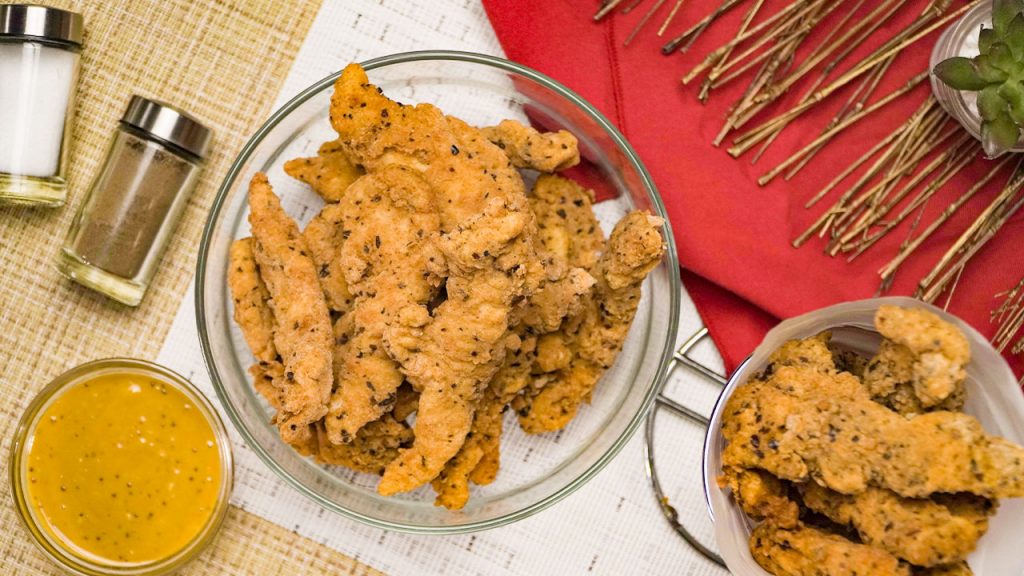
Now that you know how to tell if chicken is bad, how about we show you tips on how to avoid spoiling an otherwise perfectly-cooked rotisserie chicken, along with other kinds of chicken dishes.
Exercise Proper Storage
Unlike what everyone is led to believe, washing raw chicken before storing and cooking is not a very good idea. In fact, washing it will spread the bacteria on your countertop more than just leaving it on its own. What’s even more horrible? Bacteria on your countertop will spread to other foods and utensils. There’s a very good chance there’s cross-contamination happening in your kitchen already.
You don’t have to wash away the germs because they won’t truly go away. That is unless the meat is cooked at the right temperature to kill the bacteria.
To store your chicken for later consumption, keep it in its packaging, put it in a container, and then place it in the freezer.
READ ALSO: 12 Best Freezer Containers to Keep Your Food Fresh and Organized
Avoid Leaving It Out Too Long
It’s common knowledge not to leave perishable foods on your counter too long to prevent them from spoiling. Likewise, if you plan on cooking chicken in the evening, you don’t have to leave it out all day to thaw. Instead, you can use your microwave or handy rotisserie oven to defrost them instead.
Cook Chicken Thoroughly
Another reason why we cook chicken thoroughly is because there’s a tendency for the bacteria to multiply after exposure to certain conditions, like hot weather changes. And the more bacteria it has, the faster it’s going to spoil. So be extra careful in cooking this roasted capon chicken if you happen to get your hands on one.
Again, your chicken should be well-cooked by the time it reaches 165 degrees F. A good exercise would be to poke the meat thermometer in the thickest part of the poultry.
Know How to Buy Chicken
Buying chicken is not just about getting the biggest out of the bunch in your grocery aisle. Your search for signs of spoilage starts here, as a matter of fact. So check for any signs of spoilage stated above. You should also look for the expiration date. Our tip is this: when buying a chicken, pick one that’s at least a few days before its expiration date. That is, if you plan on cooking it right away.
Eating Spoiled Chicken Can Cause Foodborne Illnesses and Food Poisoning
We all feel guilty chucking out food, especially one that’s not been touched in the freezer. But risking your health to salvage food is not the way to prevent food waste. Learning how to tell if chicken is bad and following our helpful tips is the right way to go. So, the next time you visit the grocery or cook a scrumptious roast chicken, check for the signs we listed above.


